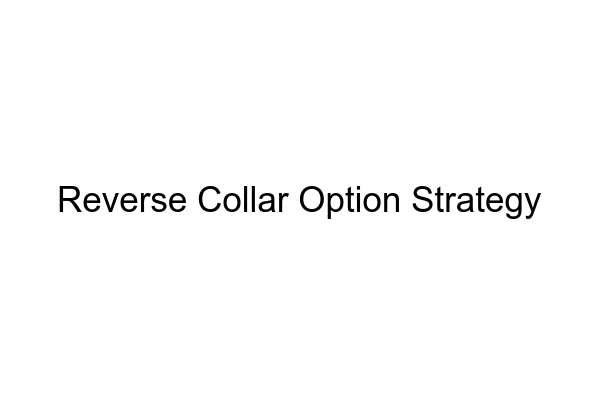Reverse Collar Option Strategy

and add h1 tag at the top of article
Reverse Collar Option Strategy
What are the characteristics of this option strategy?
The reverse collar is a strategy that involves a combination of options – one long and one short – to create a collar. The investor buys an out-of-the-money put option, and then sells an out-of-the-money call option, both with the same strike price and expiration date. By doing this, the investor creates a symmetric risk profile, which results in a risk-free profits in the event of a flat to slightly bearish market.
Is this a bullish, bearish or neutral strategy?
This strategy is relatively neutral, with a slight bias towards the bearish. It does provide some protection to investors in the event of a bear market, but is not considered to be a “bullish” strategy.
Is this a beginner or an advanced option strategy?
This is an advanced option strategy, due to the complexity of the option positions and the ability to manage risk.
In what situation will I use this strategy?
This strategy is typically used when an investor is looking to hedge their portfolio against downside risk, while still having some upside potential.
Where does this strategy typically fall in the range of risk-reward and probability of profit?
The reverse collar is a relatively low-risk strategy, with a high probability of success. The risk-reward ratio will depend on the strike prices used, but typically the risk-reward is in the range of 1:1.
How is this strategy affected by the greeks?
The greeks will have an impact on the performance of this strategy. The delta of the position is negative, meaning that it will have a negative effect on the portfolio if the underlying asset moves higher in price. The gamma is also negative, meaning that it could be subject to rapid losses if the underlying asset moves quickly.
In what volatility regime (i.e VIX level) would this strategy be optimal?
This strategy is best used in markets with high implied volatility. The higher the implied volatility, the more expensive the options will be, and the more protection the investor will receive.
How do I adjust this strategy when the trade goes against me? And how easy or difficult is this strategy to adjust?
Adjusting the reverse collar is relatively easy and straightforward. The investor can either roll the options to longer-term contracts, increase theput strike price, or decrease the call strike price.
Where does this strategy typically fall in the range of commissions and fees?
The cost of executing this strategy will depend on the type of option contract and the broker that you are using. However, the cost is typically lower than other types of option strategies due to the lower initial cost of the options.
Is this a good option income strategy?
No, this is not an ideal income strategy due to the limited upside potential.
How do I know when to exit this strategy?
The investor should look to exit the position when the underlying asset starts to move in the opposite direction of the position. The investor should also exit the position when the implied volatility starts to decrease significantly.
How will market makers respond to this trade being opened?
Market makers may be reluctant to open this type of trade due to the limited upside potential and the high cost of the options.
What is an example (with calculations) of this strategy?
Assuming MSFT is trading at $285, an investor can create a reverse collar strategy by buying an out-of-the-money put option and selling an out-of-the-money call option, both with the same expiration date.
Let’s say the investor buys a put option with a strike price of $270 and pays a premium of $4 per share. They also sell a call option with a strike price of $300 and receives a premium of $3 per share.
Here’s how the reverse collar strategy would work out:
If MSFT’s price drops below $270, the put option gives the investor the right to sell MSFT at $270, which limits their potential loss. However, the premium they paid for the put option reduces their potential profit.
If MSFT’s price rises above $300, the call option gives the investor the obligation to sell MSFT at $300, which limits their potential gain. However, the premium they received for selling the call option increases their potential profit.
If MSFT’s price stays between $270 and $300, both options expire worthless and the investor keeps the premiums they collected from selling the call option.
MarketXLS
MarketXLS is an innovative service that provides traders and investors with real-time financial data and analytical tools to help make more informed investment decisions. MarketXLS uses advanced technology and data science to collect, analyze and visualize data in an easy-to-use format. With MarketXLS, traders and investors can quickly analyze various options strategies and choose the one that best meets their needs. By utilizing MarketXLS, traders and investors can quickly gain an edge in their trading and make better investment decisions.
Here are some templates that you can use to create your own models
Search for all Templates here: https://marketxls.com/templates/
